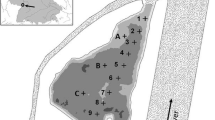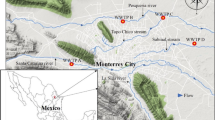Abstract
Many xenobiotics, widely diffused in the environment, have the potential to disrupt the delicate endocrine system balance of wildlife and humans. Substances showing hormone-like actions in living organisms are defined endocrine-disruptor chemicals and they may mimic, block, or interfere with the synthesis, release, transport, elimination, and binding of natural hormones. Different ecotoxicologic studies were applied to screen for the discharge of estrogenic and toxic substances into the aquatic environment from a small industrial wastewater treatment plant based in Northern Italy. Samples of wastewater (3 L) were taken at three different periods during the year from different points of the plant’s process: three phases of treatment, and effluent. Untreated samples (1 L) were assayed with two toxicity tests: Microtox and Daphnia magna. A simplified proliferation test using human estrogen receptor–positive MCF-7 breast cancer cells (E-screen assay) was performed on 2-L samples after solid-phase extraction for the determination of total estrogenic activity; the presence of estrogenic substances was evaluated by measuring the proliferation rate in cells exposed to samples. The results of the Microtox assay employing the marine bacterium Vibrio fischeri were compared with data obtained from whole-effluent toxicity testing methods employing D. magna. Toxicity was found only for the influent point. The proliferative effect of the five points, relative to the positive control 17β-estradiol (relative proliferation effect), was between 2.4% and 39%, and the 17β-estradiol equivalent concentrations were between 0.06 and 3.94 ng/L. A first comparison between results from toxicity load and estrogenic activity was performed. At all process points, the effluent samples were considered acceptable (taking only toxicity into account), but we demonstrated that they had estrogenic activity in the river water indicating an input of estrogenic substances by way of the treatment plant.
Similar content being viewed by others
Author information
Authors and Affiliations
Rights and permissions
About this article
Cite this article
Schiliró, ., Pignata, ., Fea, . et al. Toxicity and Estrogenic Activity of a Wastewater Treatment Plant in Northern Italy. Arch Environ Contam Toxicol 47, 456–462 (2004). https://doi.org/10.1007/s00244-003-0153-y
Issue Date:
DOI: https://doi.org/10.1007/s00244-003-0153-y




